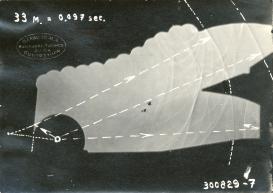Graphical representations of acoustic space confront lay and expert publics with images of phenomena that cannot be seen. Transient, time-based, and ephemeral, sound is nothing but particle movements in air, liquids, or solids. This understanding has helped scientists, as well as the public, to grasp the materiality related to sound and explain it in terms of its consequences in architectural and urban space. Visualization techniques that were developed in the eighteenth and nineteenth centuries were reevaluated for use in early twentieth-century architectural acoustics, for example by Wallace C. Sabine at Harvard University, Eugen Michel in Hanover, and Franz Max Osswald in Zurich. Testing the linkages between sound and images in applied acoustics shows how image-making techniques were used to reconfirm and communicate the findings of the modern science of architectural acoustics.
The investigation focuses on visual representations of (in)visible acoustic space using photographic techniques, with examples from architectural sound photography in laboratories for applied acoustics in Zurich and Hanover from the 1920s to the 1950s. While sound scholarship often omits the possibility that epistemologies of sound are embedded in thinking through images, the appearance of graphical experiments in acoustics research raises pertinent questions; at stake here is not the “hegemony of vision,” but the linkages between images and sound in perception and representation. Architectural acoustics had to address broad concerns, from noise abatement to transmitting and broadcasting sound. An investigation of image-making in the service of architectural acoustics can thus also reveal how the divergent lay and expert discourses on sound affected the production of such images.

